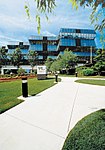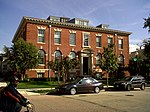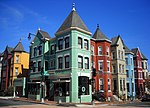McMillan Fountain
1912 sculpturesBronze sculptures in Washington, D.C.Fountains in Washington, D.C.Outdoor sculptures in Washington, D.C.

The McMillan Fountain is a public artwork by American artist Herbert Adams located on the McMillan Reservoir grounds. The fountain, completed in 1912 and dedicated in October 1919, consists of a sculptural group of the Three Graces placed upon a pink granite base. Cast by Roman Bronze Works, the fountain was originally part of a large landscape setting designed by Charles A. Platt. The fountain currently resides near its original location at McMillan Reservoir in the Bloomingdale neighborhood of Washington, D.C.
Excerpt from the Wikipedia article McMillan Fountain (License: CC BY-SA 3.0, Authors, Images).McMillan Fountain
1st Street Northwest, Washington
Geographical coordinates (GPS) Address Nearby Places Show on map
Geographical coordinates (GPS)
| Latitude | Longitude |
|---|---|
| N 38.9233 ° | E -77.01274 ° |
Address
McMillan Water Treatment Plant
1st Street Northwest 2500
20001 Washington
District of Columbia, United States
Open on Google Maps










